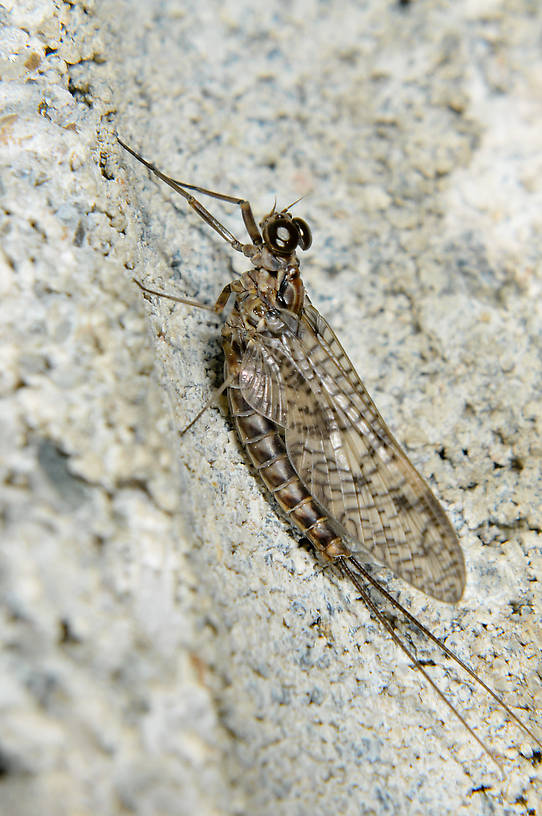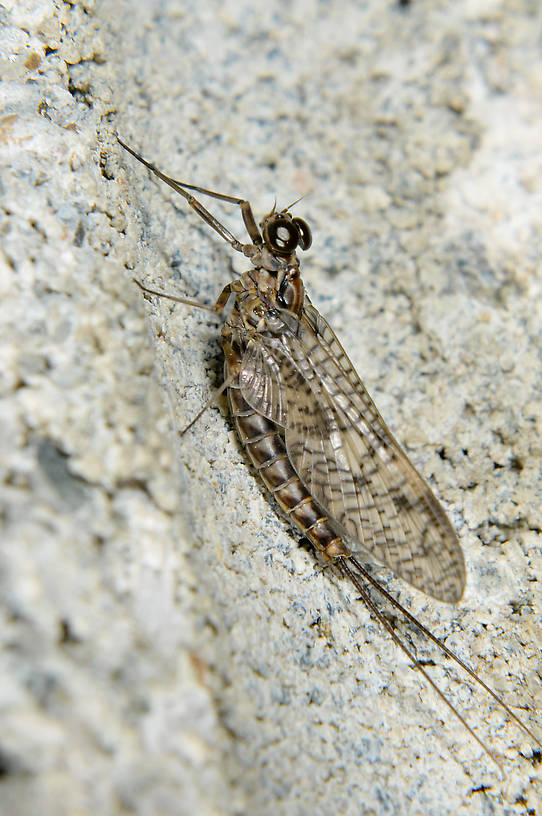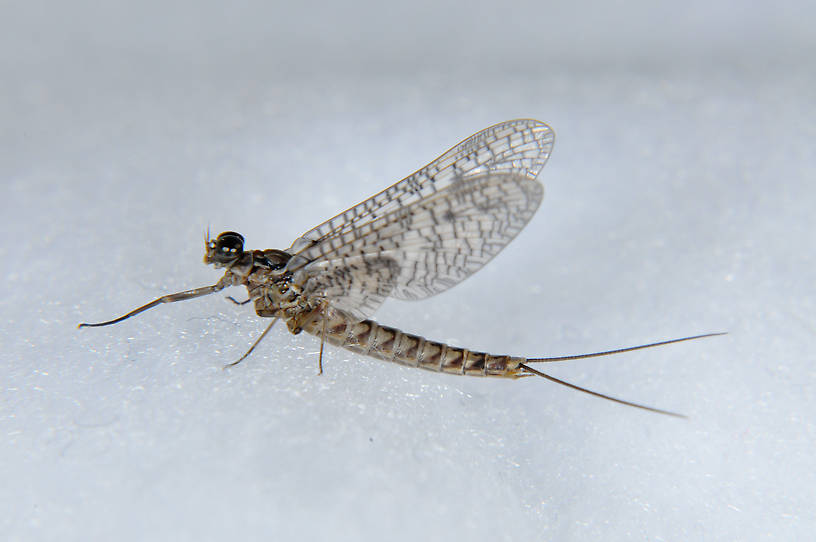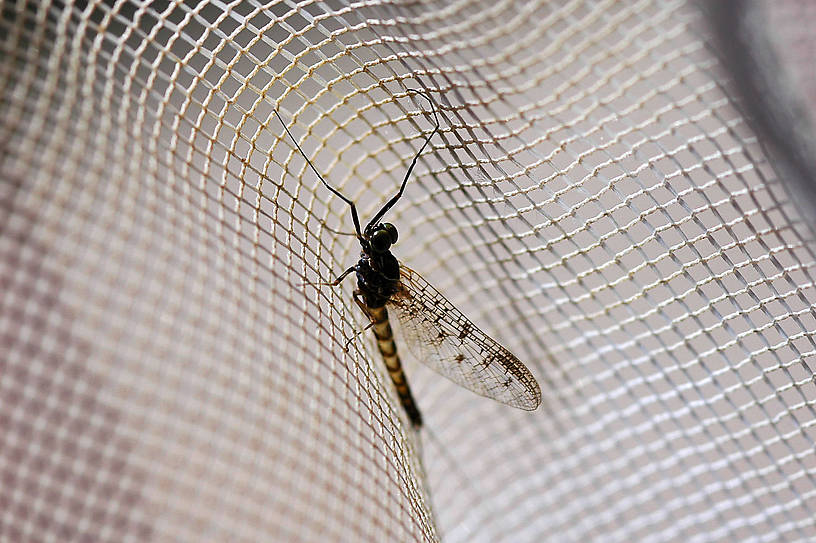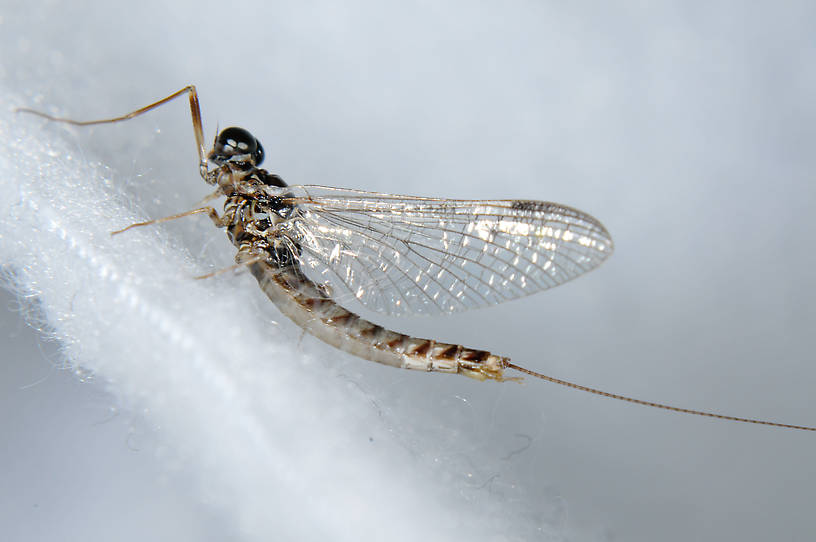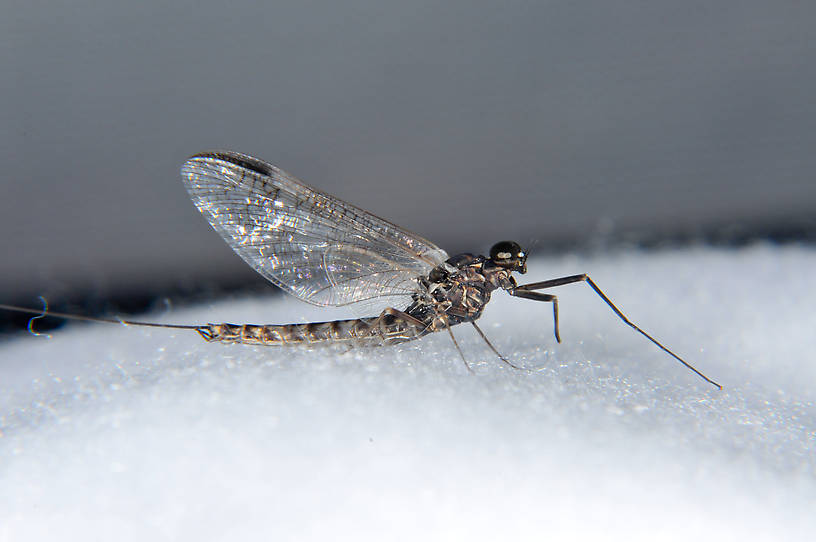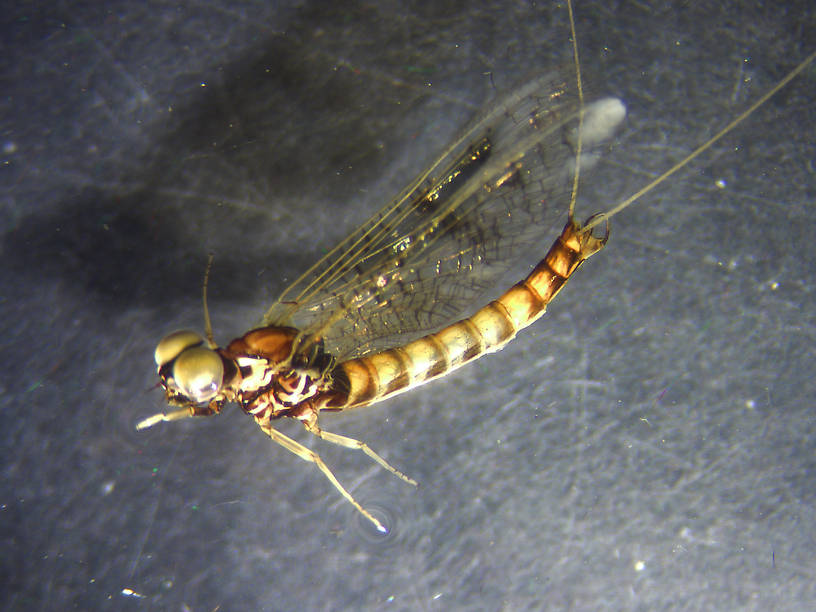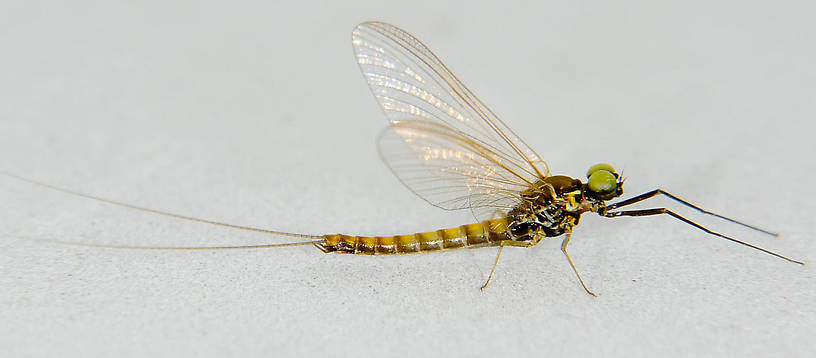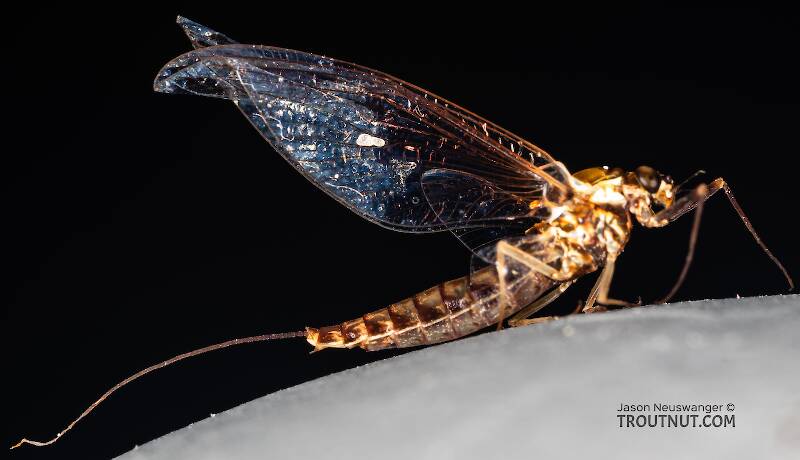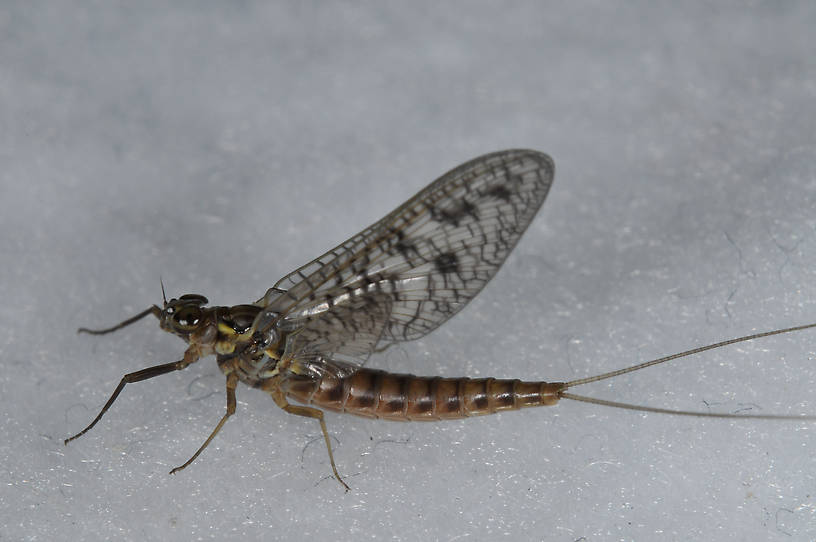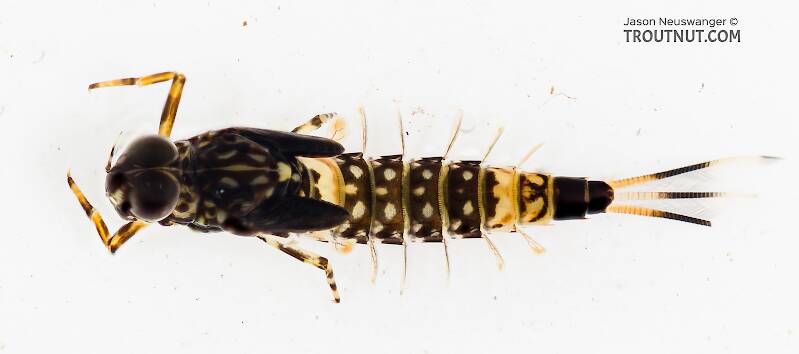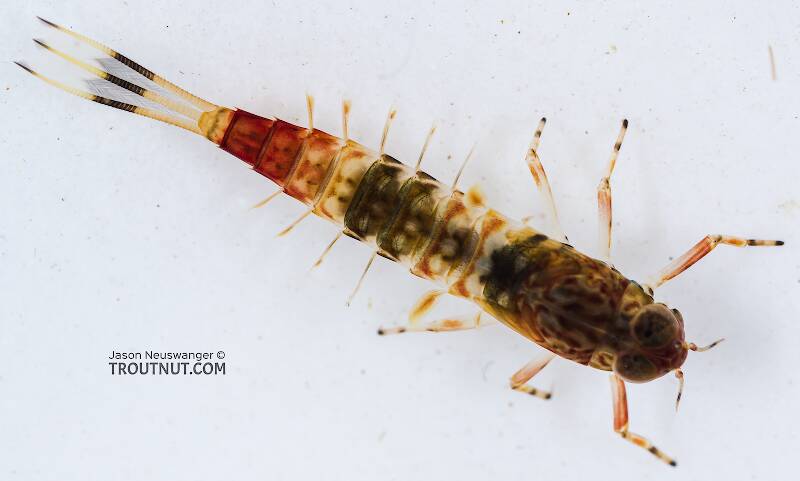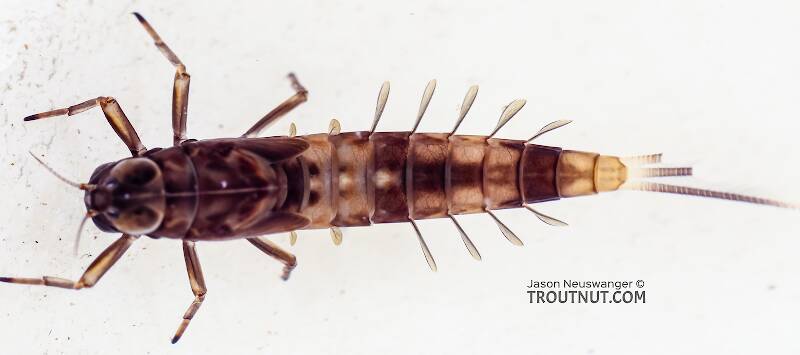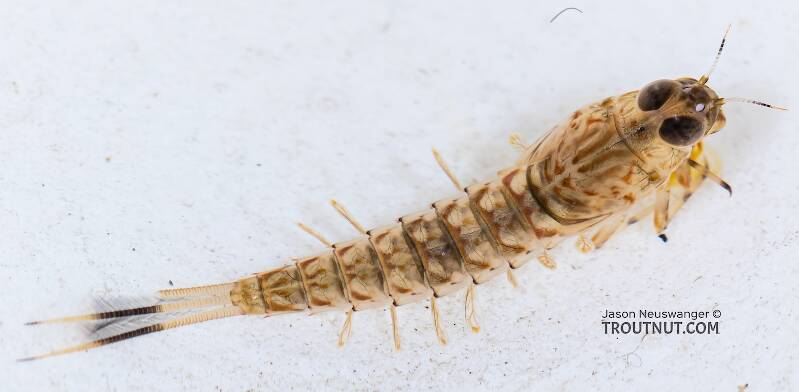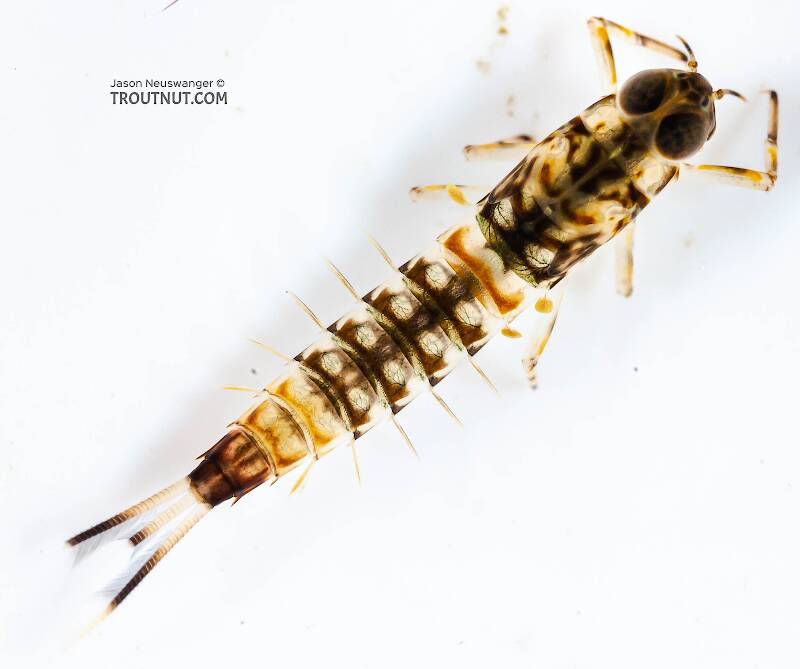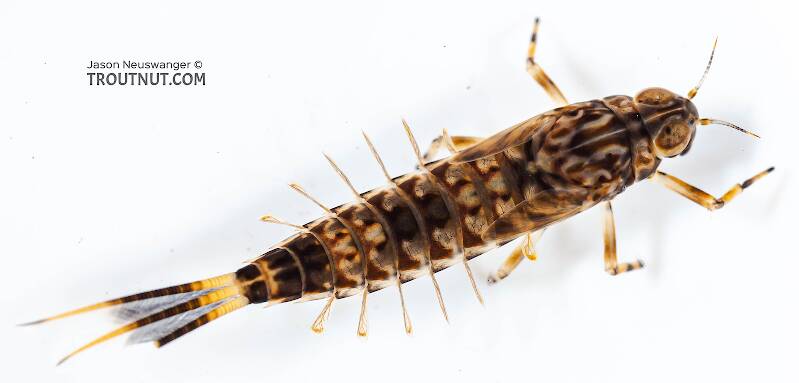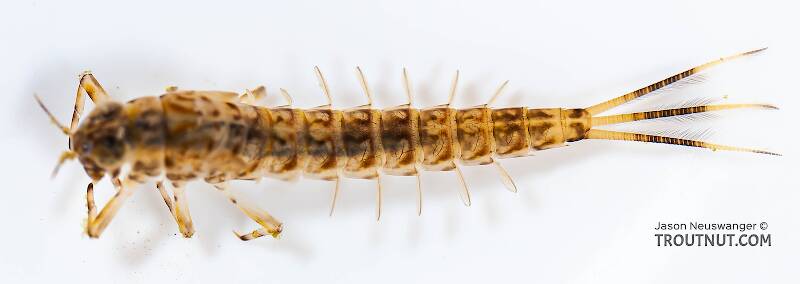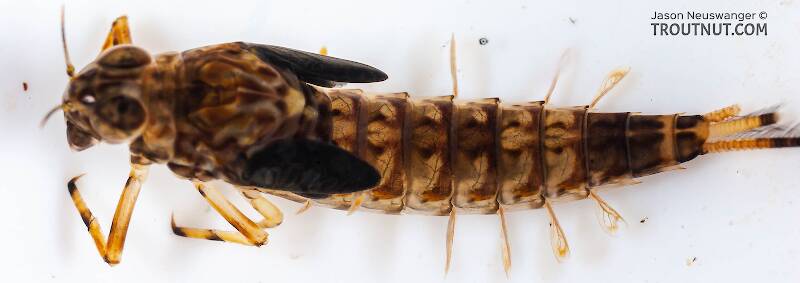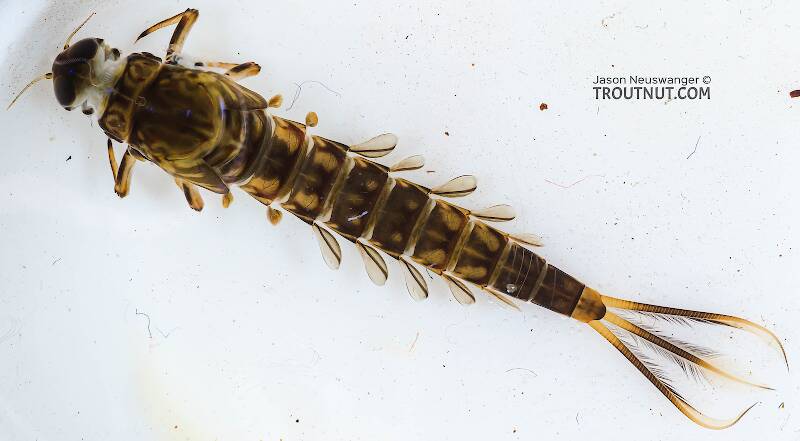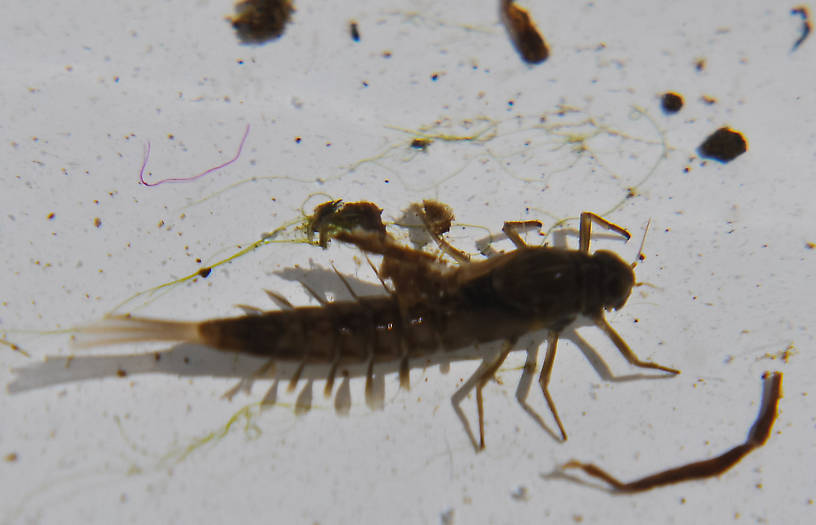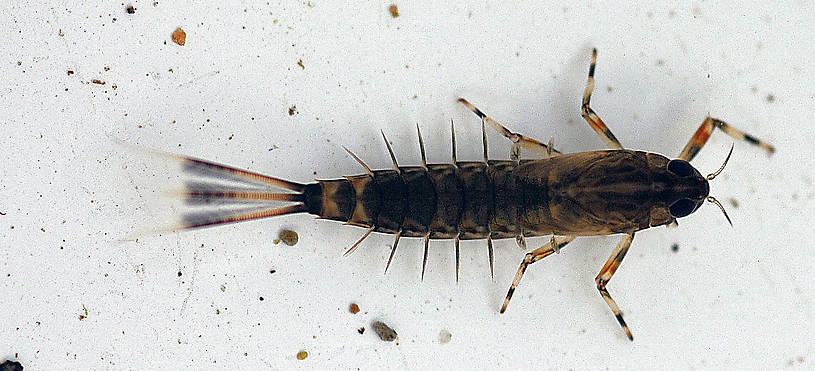
Hex Mayflies
Hexagenia limbata
The famous nocturnal Hex hatch of the Midwest (and a few other lucky locations) stirs to the surface mythically large brown trout that only touch streamers for the rest of the year.
Featured on the forum

I was not fishing, but happened to be at an unrelated social event on a hill above this tiny creek (which I never even saw) when this stonefly flew by me. I assume it came from there. Some key characteristics are tricky to follow, but process of elimination ultimately led me to Sweltsa borealis. It is reassuringly similar to this specimen posted by Bob Newell years ago. It is also so strikingly similar to this nymph from the same river system that I'm comfortable identifying that nymph from this adult. I was especially pleased with the closeup photo of four mites parasitizing this one.

Troutnut is a project started in 2003 by salmonid ecologist Jason "Troutnut" Neuswanger to help anglers and
fly tyers unabashedly embrace the entomological side of the sport. Learn more about Troutnut or
support the project for an enhanced experience here.
Mayfly Family Ameletidae (Brown Duns)
See Ameletus for details. It is the only genus in this family.
Family Range
Identification
To determine whether a specimen of Ephemeroptera belongs to Ameletidae, use the Key to Families of Mayfly Nymphs or Key to Families of Mayfly Duns and Spinners.
Specimens of the Mayfly Family Ameletidae
3 Male Duns
5 Male Spinners
2 Female Spinners
15 Nymphs
Discussions of Ameletidae
Brown Dun hatch/swarm time?
10 replies
Posted by Konchu on Apr 25, 2009 in the species Ameletus ludens
Last reply on Apr 29, 2009 by Troutnut
Has anyone else watched a Brown Dun hatch or swarm? If so, what time of day did you see it, and how long did it last?
I came upon a woodland swarm late this evening. I thought I saw mating occurring higher above the stream. This would mean that parthenogenesis is not necessarily happening in "my" stream. I watched for awhile, but got distracted (venomous snake). I hope to catch it (the hatch, not the snake) again tomorrow night and note the egg-laying behavior and possibly nab some male adults for science. There's a range of nymph ages, so I should be OK, weather permitting.
I came upon a woodland swarm late this evening. I thought I saw mating occurring higher above the stream. This would mean that parthenogenesis is not necessarily happening in "my" stream. I watched for awhile, but got distracted (venomous snake). I hope to catch it (the hatch, not the snake) again tomorrow night and note the egg-laying behavior and possibly nab some male adults for science. There's a range of nymph ages, so I should be OK, weather permitting.
Start a Discussion of Ameletidae
References
Mayfly Family Ameletidae (Brown Duns)
Taxonomy
Genus in Ameletidae
Ameletus
25
123
Genus in Ameletidae: Ameletus


